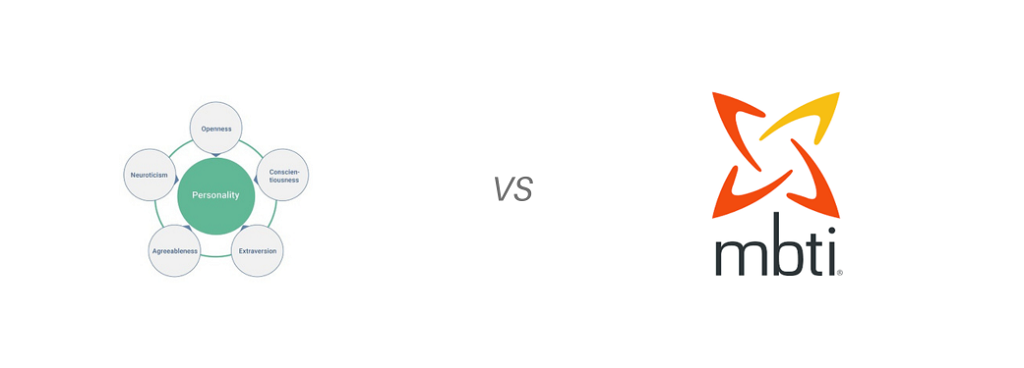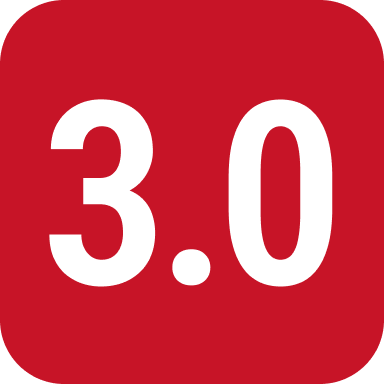
Are you ready to dive into a deep comparison between the Big Five system vs. the Myers-Briggs system? To better understand ourselves and others, personality assessments have become popular tools for personal and professional growth.
This article will compare the Big Five and the Myers-Briggs Type Indicator (MBTI) systems, examining their foundations, approaches, and practical applications.
Get ready to explore these two compelling personality frameworks and discover which resonates with you on your journey toward self-awareness and personal development.
Tests Compared: 5 Traits VS 16 Types
The Myers-Briggs Type Indicator, often called MBTI, is an assessment tool designed by Isabel Briggs Myers to help people understand and appreciate their differences.
The system consists of 16 types, which are based on four dimensions of personality:
- Extroversion/Introversion (E/I)
- Intuition/Sensing (N/S)
- Feeling/Thinking (F/T)
- Judging/Perceiving (J/P)
Each person can be classified into one of the sixteen categories based on their score in each dimension. By understanding their type, individuals can gain insight into their strengths and weaknesses and become more aware of their thoughts and feelings.
The Big Five system is an alternative approach to personality assessment developed by researchers in the 1940s. This system looks at five broad traits: Openness to Experience, Conscientiousness, Extraversion, Agreeableness, and Neuroticism.
These traits are further broken down into 25 facets that measure an individual’s level within each feature. Unlike MBTI, which places people into a specific category or type, the Big Five approach focuses on individual differences within a trait rather than across the entire spectrum.
Thus, it allows for a wide range of potential scores and opportunities for growth in any particular area.
When it comes to practical applications, both frameworks have succeeded in various settings, such as job recruitment and team dynamics. MBTI has been used to improve team communication by helping participants understand how they perceive information differently.
On the other hand, the Big Five system has been used to assess job applicants’ personalities and suitability for a particular role within an organization.
Ultimately, it comes down to personal preference when choosing between these two systems, as both provide valuable insights into human behavior while remaining easy to understand and use in everyday life.
Compared to HIGH5
Compared with HIGH5, both the MBTI and Big Five systems offer analytical approaches to personality assessment. They provide a comprehensive look into an individual’s strengths, weaknesses, and potential growth areas.
However, HIGH5 takes this one step further by using the five criteria to measure personal strengths instead of just traits or types. This allows individuals to recognize their own unique talents better while enabling them to use this knowledge for self-discovery and personal growth.
Test Structures: Range VS 4 Dichotomies
The Big Five System and the Myers-Briggs Type Indicator (MBTI) are today’s most popular and widely used personality tests. Both systems measure different aspects of personality, but they differ in the way they categorize individuals:
The Big Five system is based on five basic dimensions empirically established through research over several decades. These are Openness to Experience, Conscientiousness, Extraversion, Agreeableness, and Neuroticism.
Individuals who take this test can be classified into one of forty-eight different types, determined by where a person falls along each dimension.
The Myers-Briggs Type Indicator is based on four dichotomies or polarities representing fundamental differences in people’s preferences and outlooks.
These are Extraversion/Introversion, Sensing/Intuition, Thinking/Feeling, and Judging/Perceiving.
Individuals who take the MBTI are classified into one of sixteen different types, determined by where a person falls on each of these four categories.
The main difference between the Big Five system and the Myers-Briggs Type Indicator is that the first uses five dimensions (Openness to Experience, Conscientiousness, Extraversion, Agreeableness, and Neuroticism) to classify individuals into forty-eight different types.
In contrast, the latter uses four dichotomies (Extraversion/ Introversion, Sensing/Intuition, Thinking/Feeling, and Judging/Perceiving) to classify individuals into one of sixteen types. While the Big Five system is considered more comprehensive and complex, the MBTI is simpler and easier to interpret with greater clarity and accuracy.
The Big Five system can also provide a more holistic understanding of an individual’s personality. At the same time, the Myers-Briggs Type Indicator uses four dichotomies (Extraversion/Introversion, Sensing/Intuition, Thinking/Feeling, and Judging/Perceiving) to offer a practical approach to measuring personalities to understand how people interact with each other.
Both systems are valuable tools for gaining insight into different aspects of personality that can help us better understand ourselves and others.
Compared to HIGH5
Compared to HIGH5, which uses five dimensions to measure personality, the framework is based on a less traditional approach that looks at how individuals use their strengths in different settings.
While the Big Five and Myers-Briggs Type Indicators classify people into different categories based on a set of predetermined criteria, HIGH5 focuses more on personal development and growth.
It measures individual strengths by combining theoretical and applied approaches and develops a model for refinement through statistical research with many test takers.
How To Read The Results? Individual Characteristics VS Personality Traits
When comparing the Big Five System VS The Myers-Briggs System, the results often tell us more about a person’s characteristics than his or her personality traits. The Big Five System measures extraversion, agreeableness, conscientiousness, neuroticism, and Openness to experience.
These are concrete attributes that can be observed in a person’s behavior. On the other hand, the Myers-Briggs System focuses on how an individual perceives reality and makes decisions heavily based on intuition rather than tangible facts.
Therefore, it reveals more about one’s worldview than anything else. Ultimately, it is up to the user of either system to decide what their results mean for them.
Perhaps the most important thing to consider when interpreting any psychological assessment is the context in which it was taken and how it applies to one’s situation. Only then can you begin to make sense of these complex topics.
Compared to HIGH5
The Big Five and Myers-Briggs systems are valuable assessment tools, but the HIGH5 system takes a different approach. This system focuses on five core values. Rather than looking at individual traits or preferences, HIGH5 emphasizes deeper qualities that drive individuals to succeed.
It allows users to identify what drives them to create meaningful relationships with others and develop stronger connections that lead to growth.
Ultimately, each assessment tool provides different information about an individual’s personality. By leveraging the insights from each assessment type, individuals can better understand themselves, their relationships with others, and how to apply these qualities to become even more successful.
What Do Tests Focus On?
The differences between the Big Five System VS The Myers-Briggs System are how they measure and assess personalities. The Big Five System measures five basic traits of character: Openness, conscientiousness, extraversion, agreeableness, and neuroticism. It also looks at how individuals differ in each of those trait dimensions.
On the other hand, the Myers-Briggs System measures four pairs of opposite preferences: extraversion–introversion, sensing–intuition, thinking–feeling, and judging–perceiving.
Tests using this system help identify a person’s strengths and weaknesses in certain areas and determine what kind of work environment might be best suited for them.
When assessing mental health issues such as depression or anxiety disorders, tests such as the MMPI-2 (Minnesota Multiphasic Personality Inventory) are often used. This test looks at a person’s self-reported symptoms and behaviors and their responses to certain questions related to psychological functioning.
Clinicians need to understand the differences between tests that measure personality traits versus those that assess mental health issues to treat their patients better.
Compared to HIGH5
Compared to HIGH5 assessments, the Big Five and Myers-Briggs Systems help identify individual differences. The HIGH5, however, focuses more on self-discovery and personal growth by looking at five criteria: purposefulness, resilience, compassion, clarity of thought, and optimism.
Additionally, it measures an individual’s strengths in each criterion area so they can learn more about themselves and apply those insights to their daily lives.
Does the Big Five Relate to Myers-Briggs and How?
The Big 5 is a set of five personality traits used to measure an individual’s personality. These five traits are Openness, Conscientiousness, Extraversion, Agreeableness, and Neuroticism. The Myers-Briggs Type Indicator (MBTI) is based on the same underlying structure as the Big Five but looks at additional dimensions such as Judging/Perceiving and Thinking/Feeling.
According to research, those who prefer Intuition and Perceiving tend to be more open than those who prefer Sensing and Judging, which aligns with the MBTI’s openness facets: actions, values, feelings, fantasy, aesthetics, and ideas. Furthermore, individuals who score high on Openness tend to be more creative, imaginative, and open to new experiences.
The correlation between Big 5 and MBTI suggests that individuals with higher levels of Openness tend to score higher on the Myers-Briggs Type Indicator. As a result, those open to diverse values and change may be more likely to identify as an Intuitive or Perceiving type.
Thus, understanding the Big Five and MBTI can help provide deeper insights into an individual’s personality traits. Ultimately, this helps us better understand ourselves and others to build stronger relationships in our day-to-day lives.
What Big 5 Does Not Correlate Well with MBTI?
The Big Five personality model and the 16-Personality Types are the most popular assessment tools for understanding personality. While both provide valuable insight into individual behavior, there is some discrepancy in their correlation with Myers-Briggs Type Indicator (MBTI).
The Big Five comprises five independent and distinct traits that are scientifically valid and reliable when used for individual assessments, studies, or therapy.
On the other hand, the 16 Personality Types have four dichotomies which can help create a general understanding of employees’ strengths and weaknesses.
When comparing the two models to MBTI, it appears that Big Five’s Openness to experience trait does not correlate well with MBTI’s intuitive/sensing dichotomy.
Additionally, there are several discrepancies between the two models when measuring certain aspects of personality. For instance, while the Big Five measures conscientiousness and agreeableness, MBTI focuses on different factors, such as logical thinking or feeling.
Furthermore, due to its more detailed analysis of how people interact with the world around them, Big Five is often seen as a more accurate representation of an individual’s personality than 16 Personality Types.
The Big Five and 16 Personality Types are the most widely used assessment tools for understanding personality. While there is some discrepancy in their correlation with MBTI, these models offer valuable insight into individual behavior.
The Big Five is best suited for individual assessments, studies, and therapy, while 16-Personality can provide a general overview of an employee’s strengths and weaknesses. Ultimately, both models can be beneficial when understanding an individual’s personality.
Is MBTI More Reliable than Astrology?
The debate between the reliability of MBTI and astrology has been ongoing for some time. While both serve similar purposes in understanding and explaining different parts of our personalities, there are significant differences in how each is utilized.
The answer to the question of whether MBTI is more reliable than astrology? It depends on who you ask and what they believe in. Everyone has their unique interpretation and approach to understanding their personality – that’s okay! Not everyone will agree on a single answer, but both can be useful tools for discovering yourself.
It’s important to keep an open mind about MBTI and astrology and remember that neither offers a definite answer or solution – they are simply approaches used for gaining self-awareness.
Is the Big Five Personality Test Accurate and Reliable?
The Big Five personality test is widely accepted as one of psychology’s most reliable personality measures. When considering reliability and accuracy in measuring personality traits, studies on professional athletes show that scores on the Big 5 tend to remain consistent over time.
This suggests that the test is reliable and can accurately predict behavior in certain contexts. Furthermore, meta-analyses have shown that conscientiousness or agreeableness are strong predictors of job performance, and therefore, these traits are important for employers looking for new hires.
The BPTs’ Big 5 Test is considered one of the most accurate tests available today for workplace assessments. It covers multiple facets of personality, giving employers a comprehensive view of potential candidates.
It is also user-friendly with an intuitive design making it easier for employers to evaluate a candidate’s personality accurately and efficiently. Ultimately, the Big 5 Personality Test is useful for employers when making hiring decisions and other employee selection and development decisions.
Final Word
Comparing the Big Five versus the Myers-Briggs system can be complicated. While both measure and categorize personality traits and characteristics, their differences lie in how they assess individuals.
The Big Five system is based on five measurable facets of personality: Openness to experience, conscientiousness, extroversion, agreeableness, and neuroticism. This system examines how people interact with their environment and respond to different situations.
On the other hand, Myers-Briggs focuses on four dichotomous categories that divide personalities into sixteen distinct types (ENTJ, ISTP, etc.). These 16 types combine cognitive functions such as thinking vs. feeling and judging vs. perceiving.
It is important to note that there are various ways to measure personality traits and characteristics. The Big Five and Myers-Briggs systems are the most popular and widely used assessment methods. While they both measure different aspects of personality, understanding their differences can help us better understand our behavior or those around us.
Knowing about these two systems can assist in making decisions regarding interpersonal relationships, career choices, and communication styles. Knowing both methods can give us a more comprehensive view of ourselves and others.
Disclaimer: All trademarks mentioned on this page or any other page on the StrengthsTest.com website are the property of their respective owners, who may or may not be affiliated with HIGH5 Test. The information presented about the companies and their services is for informational purposes only and should not be construed as endorsements or criticisms. Displayed information is collected from public sources and, therefore, is subject to a degree of error where any updates or changes may not be immediately reflected. Please contact the editorial team if any of the provided information needs correction.

